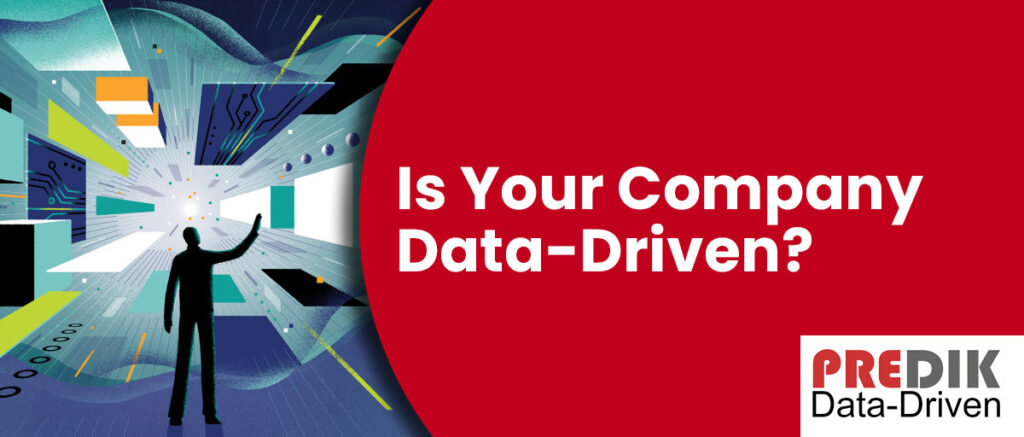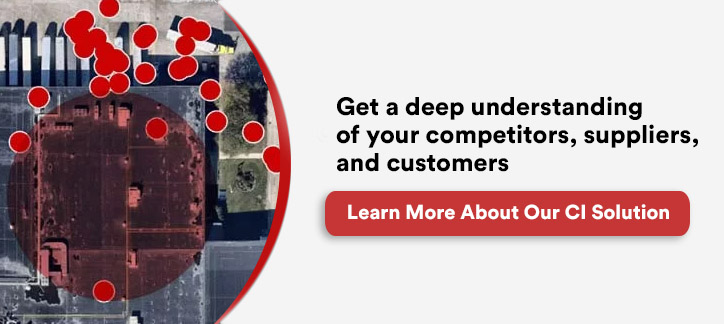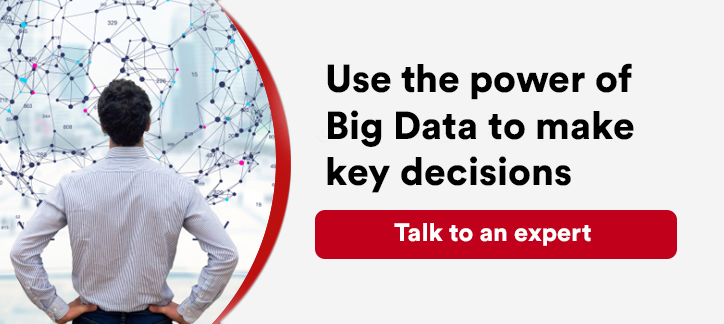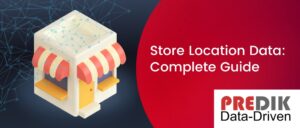71% of consumers expect businesses to offer personalized interactions; meanwhile, three-quarters will switch brands if they don’t get the experience they desire.
In the past, organizations could rely on experience and intuition to guide their strategies and actions. However, this approach is no longer acceptable with the emergence of Big Data and Data Science.
Now, companies that rely on data-driven decision-making are growing up to 30% faster than those that don’t. This is one of the reasons why brands like Amazon, P&G, Walmart, and Coca-Cola continue to dominate the market – they are always searching for new and improved sources of information to drive innovation and stay ahead of the game.
What does it mean to be a data-driven company?
Data-driven decision-making, or DDDM, refers to utilizing data to guide a decision-making process and confirm the effectiveness of a chosen course of action before implementation.
Being a “data-driven” company goes beyond collecting data, investing in infrastructure, or having a team dedicated to analyzing information. An authentic data-driven approach implies integrating a data-oriented philosophy in each process, department, strategy, and objective.
A data-driven organization invests time in gathering, analyzing, and obtaining insights from data. This enables them to effectively tackle business issues, identify growth opportunities, and enhance business profitability.
The challenge of being a data-driven company
Although there is a genuine interest for brands to get more out of their data, the reality is that only a few companies achieve the expected success. NewVantage found that only 24% of businesses manage to be data-driven.
Why? There are five main reasons:
Having incorrect data. Having a data approach is about more than just collecting a large volume of data. The key is in its quality and relevance to the organization’s needs.
Incorrect focus. The lack of clarity regarding what is expected to be solved and the goals to be achieved prevents companies from getting the most out of their data.
Unrealistic expectations. Some companies believe that a significant investment in infrastructure will immediately accelerate their results. Understanding that any data-driven approach takes time and needs clear and structured processes is necessary.
Lack of experience. Regardless of the degree of expertise a company has in terms of the use of data, it will always be helpful to rely on a company specialized in Big Data. For example, at PREDIK Data Driven, we have worked with leading brands worldwide to develop their market intelligence models.
Cultural barriers. One of the main difficulties for companies is cultural barriers in people (decision makers) and processes. The entire organization must be aware of the opportunities that data can bring.
“The main challenge in becoming data-driven is people, business processes, and culture.”
NewVantage Partners
The different stages for becoming a data-driven organization
The concept called “data maturity” includes different stages of a company using its information. Data maturity encloses not only the current role of data in an organization’s daily operations but also its potential to enable future actions that were previously impossible.
Therefore, the more mature a company is, the greater its ability to be data-driven. In this sense, there are four stages:
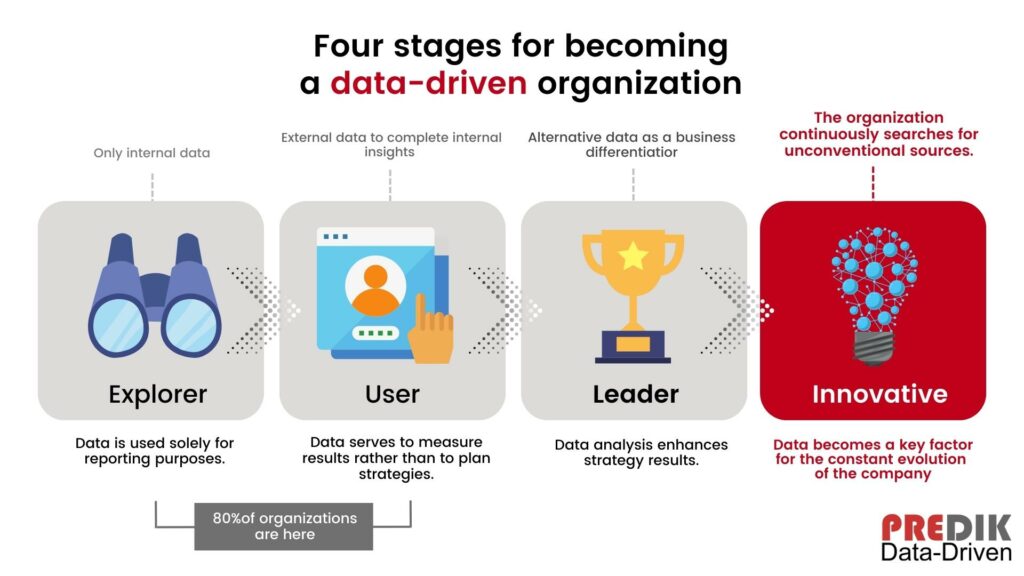
Explorer Stage
Every company must start with this initial stage. At this point, the organization collects internal data solely for reporting purposes.
User Stage
Organizations begin to use external sources to complete the information already collected internally. Here, the data serves to measure results rather than to plan strategies.
Leader Stage
Here, data is the foundation of all competitive strategies. Alternative data and thorough data analysis are crucial in achieving optimal business outcomes.
At this stage, all members of an organization align into an information culture. Companies, at this point, can state they are data-driven.
Innovative Stage
Data becomes a key factor for the constant evolution of the company and its business strategies. At this stage, the organization continuously searches to obtain information from unconventional sources.
Also, data architecture is built to be fast and efficient. This is the optimal level at which a company should be in the analysis of information.
Three main characteristics of a data-driven organization
There is a democratization of data throughout the organization
An organization that values data ensures that every member has easy and intuitive access to information. Additionally, any insights gained are communicated clearly and understandably.
For example, Nike has created a competitive intelligence system allowing teams to access critical information to streamline their analysis and decision processes easier.
Leaders within the company value and trust data to make strategic decisions
Leaders in the organization are typically the first ones who recognize data’s importance. An example is Satya Nadella, the CEO of Microsoft, who prioritized establishing a data culture throughout the company.
Then, this approach gradually permeated through the employees, who saw how decisions were made from a more analytical angle, with data being the center of everything.
“In a mobile first, cloud first world, one of the most fascinating truths is that data is not only consumed, but also generated at an accelerating rate and in exponentially increasing amounts.”
Satya Nadella, Ceo de Microsoft
Then this data culture starts to spread amongst the organization. People start observing how decisions are being made based on a more analytical approach, with data taking center stage.
Members of an organization understand the data
It is common for companies to have certain areas and positions that are more in contact with data analysis. For example, sales managers will spend much time examining sales data, meanwhile, their field team will be more focused on executing.
Organizations that rely on data distinguish themselves by having a significant number of members with a certain degree of data literacy. This indicates that the more members of the company comprehend the available data, the greater the possibility of establishing a culture of data-driven innovation.
“Since 2020, 80% of organizations initiated deliberate competency development in the field of data literacy, acknowledging their extreme deficiency.”
Gartner
Benefits of having a data-driven approach
Better decision making
Maintaining a constant and detailed analysis of the market offers solid bases for:
• Decide if it is a good idea to launch a new product, set up a new POS, or introduce the brand in new unserved markets.
• Understand the innovation approach that should be followed.
• Structure successful pricing, commercial, marketing, and distribution strategies.
A deeper understanding of your audience
To truly understand customers, it’s essential to have a reliable process for gathering valuable information. This includes everything, from their preferences to any complaints they may have. By gaining crucial insights into the users, an organization can improve its ability to meet their needs and identify new opportunities in the market.
In other words, a data-driven approach provides focus and ensures customer satisfaction.
Competitive analysis
Positioning yourself as a leader in an industry is possible through a data-driven market intelligence framework. A more comprehensive market image allows organizations to understand the necessary steps to gain ground over the competition.
An illustration of a data-driven approach is when a company uses insights to predict the potential revenue of a product in a specific distribution channel. Also, decision-makers can estimate, with greater precision, how long a new product will require to obtain a certain ROI.
Increased efficiency in critical processes
How to increase the productivity of the labor force? How to be faster and more efficient? How to reduce production times? For a data-driven organization, detecting the true causes of an internal problem and the most optimal solutions is more effortless.
Identify trends faster
For many companies, one significant challenge is keeping up with the new trends that influence customers.
For example, more young people from Generation Z are consuming less alcohol compared to previous generations. This has forced alcoholic beverage brands to adapt their products to the needs of this segment.
Through a data-driven approach, companies can constantly monitor market changes and detect the rise of new trends before others.
We recommend you: Learn how Marketing Teams can use Predictive Analytics to make better decisions
Is your organization data-driven? (Steps to follow)
Regardless of the degree of maturity in your organization, REDIK Data-Driven can assist you in maximizing the potential of your data. Our solutions are designed to elevate your company to new heights.
Through our specialized methodology and a strong team of data scientists and business experts, we have helped brands like Adidas, Bayer, and Shell achieve success.

